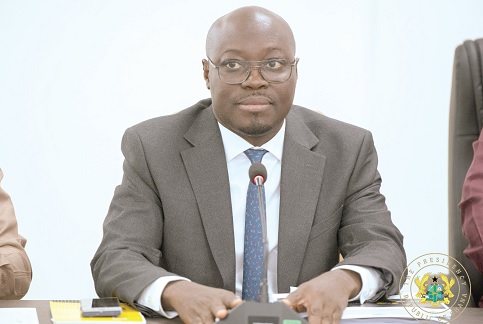S&P Global Ratings has upgraded Ghana's credit ratings to 'B-/B' from 'CCC+/C', reflecting improvements in fiscal management, external balances, and the country's economic recovery. The outlook on the rating is stable.
The rating agency also upgraded the country’s transfer and convertibility assessment to 'B-' from 'CCC+', indicating increased confidence in the country's ability to manage foreign exchange flows and meet external obligations.
According to S&P, the rating upgrade reflects Ghana’s strengthening balance of payments position and a gradual fiscal rebound, underpinned by sustained economic growth and favourable global prices for gold and cocoa, which together account for more than 60 per cent of the country’s exports.
S&P projects Ghana’s gross international reserves to increase to $10.4 billion (nine per cent of GDP) by the end of 2025, compared to $6.8 billion in 2024.
Inflation, which exceeded 20 per cent in recent years, is expected to decline and remain below 10 per cent from 2026 onwards, while the cedi has appreciated by about 30 per cent against the U.S. dollar since the start of 2025.
The ratings agency noted that Ghana’s new administration, elected in December 2024, has introduced fiscal rules targeting a 1.5 per cent primary surplus annually and a debt-to-GDP ratio of 45 per cent by 2034.
Reforms
These reforms, coupled with strengthened expenditure controls and procurement oversight, are designed to avert the fiscal slippages that previously undermined macroeconomic stability.
S&P highlighted Ghana’s significant progress in sovereign debt restructuring following its 2022 default. The government has completed the domestic debt exchange programme (DDEP) and the $13.1 billion Eurobond restructuring in 2024.
Negotiations are ongoing to conclude the restructuring of the remaining $5 billion owed to certain official and commercial creditors.
The agency, however, warned that pending disagreements between Ghana and some lenders — including the African Export-Import Bank (Afreximbank) and the Eastern and Southern African Trade and Development Bank (TDB) — could delay the completion of the debt restructuring process.
S&P revised Ghana’s 2025 GDP growth projection upward to 6.0 per cent from 4.5 per cent, citing broad-based sectoral expansion and renewed investor confidence.
The country’s current account surplus is projected to reach 4.6 per cent of GDP in 2025 — the highest on record — before easing as global commodity prices stabilise.
Despite the upgrade, S&P cautioned that Ghana’s credit rating remains constrained by elevated debt-service costs, institutional weaknesses, and exposure to commodity price and climate-related shocks.
The agency added that the durability of the government’s fiscal reforms will depend on how well they hold through a full electoral cycle, a period that has historically seen fiscal slippages.
Outlook
S&P stated that the stable outlook reflects a balance between upside potential from stronger fiscal and external performance and downside risks associated with reform execution and debt-service pressures.
A further upgrade, the agency noted, could result from sustained fiscal discipline, higher foreign reserve accumulation, and restored access to international capital markets.
Conversely, the rating could face downward pressure if fiscal consolidation weakens, debt-servicing costs rise, or if commodity prices deteriorate sharply.
Ghana, which defaulted on its external debt in December 2022, is currently implementing a US$3 billion IMF Extended Credit Facility (ECF) programme expected to run until May 2026. The programme underpins fiscal reforms and supports efforts to restore macroeconomic stability.
